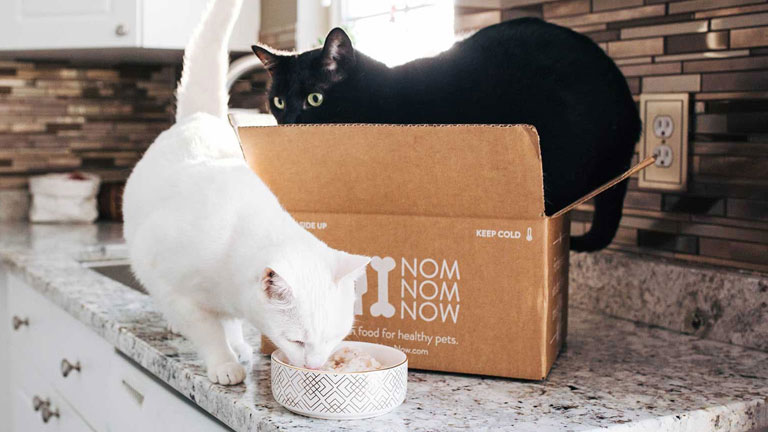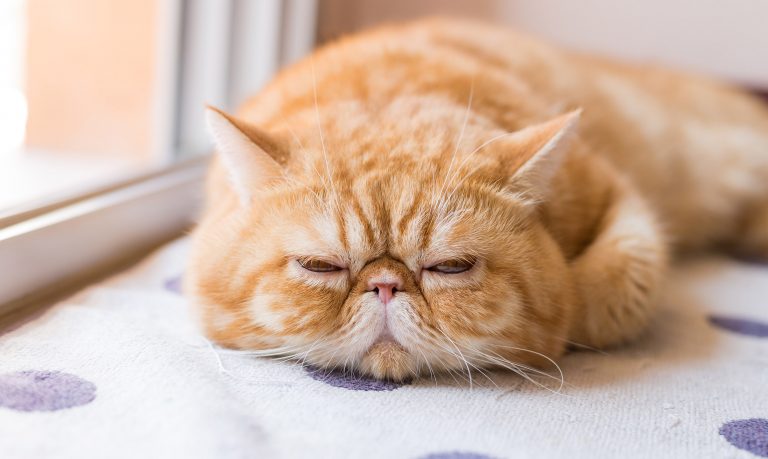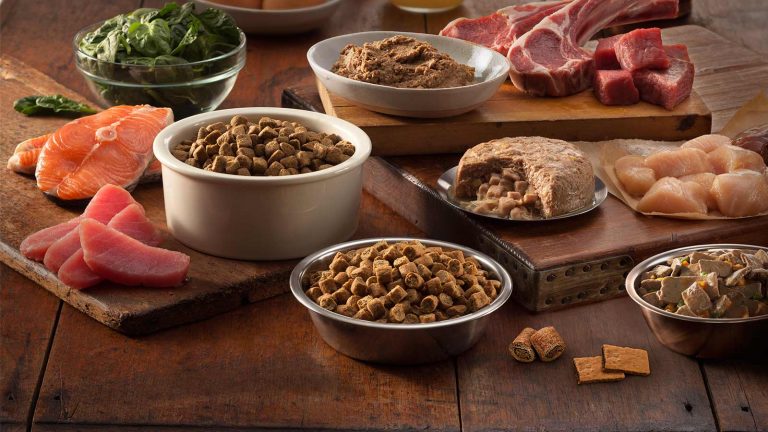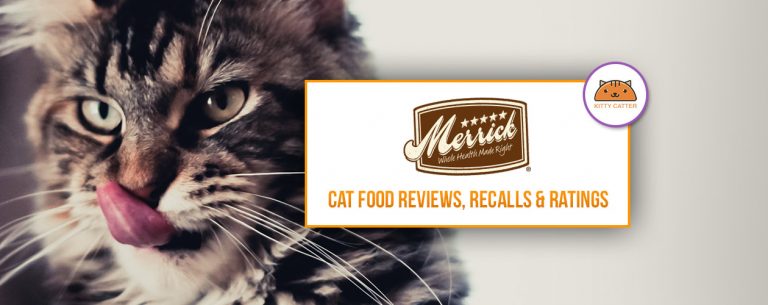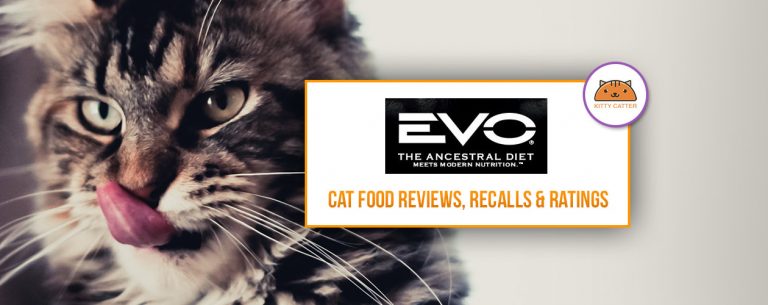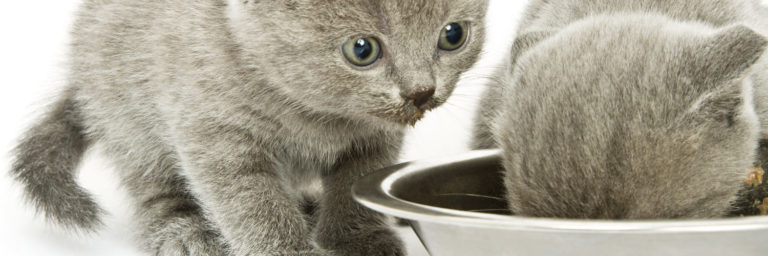What is Human Grade Cat Food…and Which Brands are Best?
Contents of Article
It sounds like the epitome of excellence, but human grade cat food’s promises are best met with skepticism.
The human grade label is poorly-understood and its regulation complex. Before you try to choose the best human grade cat food, it’s important to detangle the term’s definition and understand exactly what makes human grade food different.
After discussing what human grade cat food is and is not, we’ll share our picks for the top 5 best human grade cat foods on the market.
For now here’s a quick look…
What is the Best Human Grade Cat Food?
What is human grade cat food?
For years, there was no official definition of the term “human grade” and it was essentially a buzzword that meant something different to everyone who used it. In 2016, the American Association of Feed Control Officials (AAFCO) acknowledged the “human grade” labeling trend and sat down to write a summary of the term.
The following AAFCO clarification on the term “human grade” has appeared in their handbook since 2017:
“The U.S. Department of Agriculture (USDA) defines products fit for human consumption to be officially “edible.” These foodstuffs have been processed, inspected and passed manufacturing regulations (i.e. process control regulations) that are designed to assure safety for consumption by humans.”
The AAFCO explains that “For a product to be deemed edible for humans, all ingredients must be human edible and the product must be manufactured, packed and held in accordance with federal regulations in 21 CFR 110.”
Human Grade Cat Food Ingredient Standards
The most significant difference between human grade cat food and other products is that, while non-human grade food may or may not contain “inedible” ingredients, human grade food never does. Human grade cat food is made from human-edible ingredients only.
From the FDA Compliance Policy Guide:
“The pet food canning industry utilizes undecomposed animal and marine tissues from various sources. These include products of the rendering industry such as various meat, poultry, and bone meals; meat scraps and offal from packing house waste, freshly boned-out animals; and occasionally meat from animals that may have died otherwise than by slaughter.”
While these ingredients would ordinarily be illegal in human food, the organization has determined that they’re safe for pets if thoroughly processed. The document goes on to explain the FDA’s stance on these ingredients:
“Pet food consisting of material from diseased animals or animals which have died otherwise than by slaughter, which is in violation of 402(a)(5) will not ordinarily be actionable, if it is not otherwise in violation of the law. It will be considered fit for animal consumption.”
To reiterate, this FDA statement means that some pet foods contain meat from animals that died from an illness or otherwise not from slaughter. Diseased meat isn’t the only concern—according to FDA regulations, pet feed may also be contaminated.
As per the FDA compliance manual: “FDA does not object to the diversion to animal feed of human food adulterated with rodent, roach, or bird excreta.”
Other forms of adulteration that may be permitted in pet food include excessive pesticides, industrial chemical contamination, natural toxins and filth, microbiological contamination, or drug residues.
Not all pet food not advertised as human grade contains adulterated or low-value ingredients, but it’s legally possible. Human-grade cat food isn’t always made from the best ingredients, but it cannot lawfully contain the contaminated, diseased, or low-value ingredients that are legally permissible in pet food.
Human Grade Cat Food Manufacturing Standards
Foods processed for human consumption are made in facilities regularly inspected by the FDA or USDA and must conform to stringent hazard analysis and control protocols, good manufacturing processes, and hygiene standards. Pet food facilities may have equally stringent standards, but no government organization demands those standards out of a pet food plant.
This is a recurring theme when comparing human grade food to other pet food. Pet food that’s not marketed as human grade may be just as safe and clean as a human grade food, but those excellent standards aren’t backed by government regulation.
The AAFCO definition gives us a foundation for understanding what human grade cat food is, but it doesn’t clear the murkiness of the human grade label.
The AAFCO has defined the human grade term, but the AAFCO has zero regulatory power.
A pet food company may meet all of the standards outlined by the AAFCO definition, but before legally claiming their food is human grade, they must seek approval from a state agricultural department. Every state has slightly different standards and a unique approach to pet food regulation.
Because it’s challenging to legally earn the human grade label, many companies avoid calling their food human grade but take advantage of the term’s marketing value in any way they can. Some companies boast of “human grade ingredients” or say their food is “human style”.
When you see these allusions to the human-grade designation, contact the company and ask for more information on their ingredients and manufacturing standards.
Best Human Grade Cat Food: Our Top 5 Recommendations
The Honest Kitchen Chicken Recipe Dehydrated Cat Food
First 5 Ingredients: Chicken, Eggs, Potatoes, Sweet Potatoes, Organic Flaxseed
In 2007, the Ohio Department of Agriculture refused to grant The Honest Kitchen a license to sell in the state of Ohio, stating that The Honest Kitchen’s “human grade” claims were misleading. Ultimately, the court ruled in The Honest Kitchen’s favor, defending their right to truthful commercial free speech.
Through their Letter of No Objection ingredient verification process, the FDA confirmed that every ingredient used in The Honest Kitchen cat food was appropriate for human consumption and that their products were made in a human food facility.
The Honest Kitchen ingredient suppliers are required to provide a signed “Human Food Grade Guarantee” and must maintain human edible status from harvest through delivery.
This facility is subject to FDA inspection and meets SQF (Safe Quality Foods) level II standards for human food safety. It meets or exceeds all FDA safety guidelines, including hazard analysis and control and the organization’s established GMPs (Good Manufacturing Practices).
The Honest Kitchen foods are minimally-processed and feature dehydrated meat, fruit, and vegetables. You prepare them a bit like instant mashed potatoes—pour the dehydrated blend into your cat’s bowl, mix in warm water, let it sit for three minutes, and serve.
While The Honest Kitchen’s ingredient quality is par excellence, their ingredient choices aren’t the most carnivore-appropriate. Their recipes are loaded with species-inappropriate ingredients, including potatoes, cranberries, spinach, and more. They’re relatively high in carbohydrates, too. They’re not appropriate for cats with diabetes or others who want to avoid starchy foods.
The Honest Kitchen cat food is some of the most expensive on the market.
Pros
- One of the few truly human grade cat food brands
- The recipe is 70% fresh chicken meat
- Free of artificial additives
- Dehydrated food is minimally processed
Cons
- High carbohydrate content
- Expensive
Caru Classic Turkey Stew Grain-Free Wet Cat Food
First 5 Ingredients: Turkey, Turkey Broth, Tapioca Starch, Egg Whites, Sweet Potato
After reviewing documentation of the company’s ingredients, processing, and handling, the FDA concluded that Caru Natural dog stews are all human grade products. When the company released a line of cat stews in 2018, those products were also certified human grade.
From ingredient handling to shipment, Caru cat food is made and handled under the same standards that guide human food production.
Caru cat stews are pureed foods that come in a carton instead of a can or pouch. They’re made primarily from meat with a few vegetables and supplemental vitamins, minerals, and amino acids. Caru’s Turkey stew is a meat-based food with under 10% carbohydrates on a dry matter basis, making it a species-appropriate choice for any cat.
Like other brands that adhere to human food standards from the top to bottom of their manufacturing process, Caru foods are expensive. The Turkey recipe costs about $4 to $4.50 per day.
Pros
- Truly human grade food
- Low in carbohydrates
- Meat-based, protein-rich food
- Free from artificial colors, flavors, and preservatives
Cons
- Expensive
- Some cats don’t like the taste or texture of this Caru stew
NomNomNow Chicken Chow-Meow
First 5 Ingredients: Chicken Thigh, Chicken Breast, Chicken Liver, Asparagus, Carrot
NomNomNow foods contain human grade, restaurant-quality ingredients and are made in human food processing facilities in California and Tennessee. Everyone who works in the NomNomNow kitchens possesses state-issued food safety certificates and is educated in food safety and quality control for human food consumption.
NomNomNow is more than a human grade cat food brand—it’s a personalized cat food meal delivery service. When you order your first batch of NomNomNow cat food, you’ll input information about your cat’s health, weight, and weight goals.
The NomNomNow staff prepares small batches of fresh food and portions it out according to your cat’s calorie needs, then ships a week’s or month’s supply in a refrigerated box.
NomNomNow’s Chicken Chow Meow is flaked chicken mixed with a blend of low-glycemic veggies and NomNomNutrient mix for nutritional completeness. The food is rich in animal-sourced protein with low carbohydrate content. It’s a species-appropriate choice for any cat.
The price of NomNomNow varies based on how many cats you have and your delivery schedule of choice, but it’s more expensive than the average cat food.
Pros
- Truly human grade cat food
- Primarily made from fresh meat
- Low in carbohydrates
- Free of artificial colors, flavors, and preservatives
Cons
- Only available in the 48 contiguous United States
- Available only with a subscription
JustCats Fish & Chicken
First 5 Ingredients: Alaskan Pacific Wild-Caught Cod, Whole Atlantic Sardines, Dried Yuca Root, Chicken Thighs, Chicken Hearts
JustCats Fish & Chicken recipe is a high-protein, low-carbohydrate diet that’s perfect for adult cats of all breeds. The meals are made by hand in kitchens that are open to the public, which is a pretty cool concept. This nutritionally balanced cat food contains yuca root to absorb and retain moisture, to help ensure your cat is always fully hydrated. Yuca root is also highly digestible. It is made with human-grade ingredients and the main source of protein is Alaskan Pacific wild-caught cod. Cod is low-calorie and a good source of omega-3 fatty acids, niacin, vitamin B12 & B6, potassium, phosphorus, and selenium. Cat food that contains easily digestible EFAs, like those in fish, helps contribute to a healthy, shiny coat. If you choose this food for your cat, you can have peace of mind knowing that it is formulated to meet the nutritional levels established by the AAFCO Cat Food Nutrient Profiles for maintenance.
Pros
- Made in an open kitchen
- Uses human-edible ingredients
- Low in carbohydrates
- Rich in animal protein
- Free of artificial colors, flavors, and preservatives
Cons
- Expensive
Whole Life LifeBites Chicken Recipe Grain-Free Freeze-Dried Cat Food
First 5 Ingredients: Chicken, Sweet Potato, Chicken Liver, Peas, Yogurt
Though the company doesn’t call their foods human grade, they’re made in a company-owned, FDA-inspected facility in western Massachusetts. This facility meets all FDA standards for human food production.
Whole Life says their food ingredients are 100% human grade and sourced from the United States. Note that “food ingredients” doesn’t include vitamins and minerals, which the company sources globally and could be feed grade products.
According to the Whole Life website, the company’s goal is “to be the most transparent pet food and treat company on earth.”
The company publishes a sourcing guide, allowing you to trace the origins of every ingredient that goes into Whole Life cat food. Their Farm-to-Friend guarantee ensures that all ingredients are 100% traceable and produced in the United States.
By entering the lot code printed on each bag, you can view test results for the batch you bought, verifying that the food tested negative for crucial pathogens.
Whole Life’s LifeBites Chicken recipe is a freeze-dried food consisting of chicken muscle meat and liver mixed with fruits, vegetables, yogurt, and a variety of supplemental ingredients. You can serve the bites as-is or add water for a hydrating meal.
With generous inclusions of plant ingredients and a carbohydrate percentage around 23%, this food may not be meaty enough to satisfy those committed to feeding their cat a carnivore-appropriate diet.
Pros
- Primarily made from chicken muscle meat and liver
- Made from human grade ingredients
- Prepared in an FDA-inspected human food processing facility
- Free of artificial colors, flavors, and preservatives
Cons
- Not officially a human grade food
- High carbohydrate content
The move towards human grade cat food is inspiring, but human grade food isn’t necessarily better than the rest.
Human grade food brings some peace of mind about ingredient quality and safety, but the distinction doesn’t tell you everything.
It has no bearing on the nutritional quality of the food. Human grade cat food may be nutritionally inadequate or inappropriate.
Some foods that aren’t human grade are nutritionally superior and undergo equally stringent quality control measures. In fact, some foods that aren’t labeled human grade are made in human food-worthy facilities or made from human-edible ingredients.
Human grade food is worth seeking out if you can afford it, but don’t let your interest in human grade products blind you to the world of excellent products that don’t use the label.

